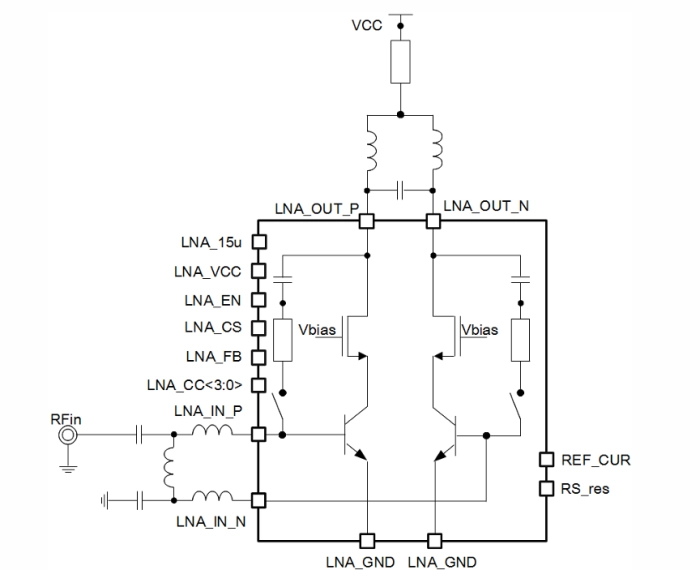Low noise amplifier (LNA) is usually used as the first stage of receivers and is characterized by low noise figure and high linearity. The structure is based on two matched cascades. The first one is a common-emitter bipolar transistor and the second is common-gate FET. Commutable feedback is used to improve the linearity in the lower range of operating frequencies (130...435 MHz).
The block is fabricated on iHP SiGe BiCMOS 0.25 um (SGB25V) technology.
130 to 930 MHz Low-noise amplifier
Overview
Key Features
- iHP SGB25V
- Frequency range 130…930 MHz
- Subband amplifier selection
- Low noise figure
- Feedback circuit for linearity improving
- Amplifier current consumption control
- Gain temperature compensation mode
- Portable to other technologies (upon request)
Block Diagram

Applications
- Input RF preamplification in receiver
Deliverables
- Schematic or NetList
- Abstract model (.lef and .lib files)
- Layout view (optional)
- Behavioral model (Verilog)
- Extracted view (optional)
- GDSII
- DRC, LVS, antenna report
- Test bench with saved configurations (optional)
- Documentation
Technical Specifications
Short description
130 to 930 MHz Low-noise amplifier
Vendor
Vendor Name
Foundry, Node
iHP SiGe BiCMOS 0.25 um
Maturity
Silicon proven
Availability
Now